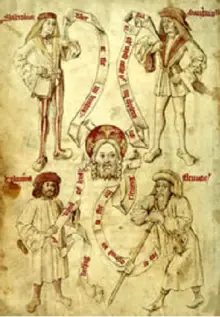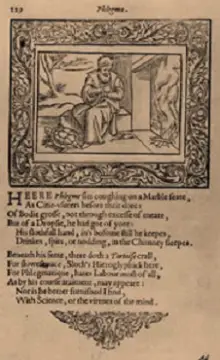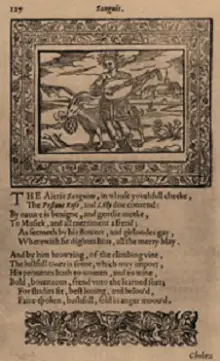When I was studying homeopathy at college (1994-1998) we were encouraged to exchange returned assignments in order to benefit from each other’s perspectives on the subject. This essay is offered in that spirit. It was written for a specific assignment and although there might be additional insights I would add now, it’s presented here as I wrote it originally.
Assignment: “We frequently speak of constitution and of constitutional remedies. Yet, when we ask ourselves what constitution actually is, we find we are at a loss for an answer. A definition like Bauer’s ‘the sum total of an individual’s characteristics as they are potentially determined at the moment of fertilisation’ means really very little because it means too much and is too general. If every characteristic is looked upon as constitutional, we still lack a yardstick to measure what represents the differentiating elements between constitutional and non-constitutional factors.” (Edward Whitmont)
In your reading of Hahnemann, Kent, Whitmont, Vithoulkas, Ortega, Sankaran and any other homeopathic or non-homeopathic sources you consider to be relevant, discuss the different ideas about ‘Constitution’ and arrive at a well-argued conclusion which goes some way to provide the ‘yardstick’ that Whitmont mourns the lack of.
Definitions
(Chambers English Dictionary)
Constitute vt. to set up; to establish; to form or make up; to appoint; to give being to
Constitution n. the act of constituting; the natural condition of body or mind; disposition; a system of laws and customs established by the sovereign power of a state for its own guidance; an established form of government; a particular law or usage; in chemistry, molecular structure, taking into account not only the kinds and numbers of atoms but the way in which they are linked.
Constitutional adj. inherent in the natural frame; natural; agreeable to the constitution or frame of government; essential; legal; reigning subject to fixed laws; supporting the existing constitution.
—n. a walk for the sake of one’s health.
[L constituere, constitutum — con intens, statuere to make stand, to place]
(Websters New Twentieth Century Dictionary)
Constitute vt.
[L. constitutus, pp. of constituere, to set up, establish; from com-, together, and statuere, to set.]
to set up (a law, government , institution, etc.); establish.
to set up (an assembly, proceeding, etc.) in a legal or official form.
to set up as; appoint; ordain; as, the students constituted him their spokesman.
to make up; form; compose; be the components or elements of; as, twelve people constitute a jury.
to make up or form of elements, material, etc.
Constitution n.
[ME. constitucion; OFr. constitution; L. constitutio, from constituere, to establish; from com-, together, and statuere, to set.]
a setting up; establishment. an appointing. a making up; composition.
the way in which a thing is made up; structure; organisation; make-up.
the way in which a person is made up; physical or mental make-up; as, a man of strong constitution.
the way in which a government, state, society, etc. is organised.
the system of fundamental laws and principles of a government, state, society, corporation, etc., written or unwritten.
a document or set of documents in which these laws and principles are written down.
[C-] the Constitution of the United States (…)
Constitutional adj.
of, pertaining to, or inherent in, the constitution of a person or thing; basic; essential.
of, in, authorised by, subject to, dependent on, or in accordance with the constitution of a government, state, society, etc.
upholding the constitution.
beneficial to or having the tendency to benefit the constitution; good for one’s health; as, a constitutional walk.
(Roget’s Thesaurus)
Constitution
Intrinsicality.—N. intrinsicality, inbeing, inherence, inhesion, immanence; subjectiveness; ego; essence;
essentialness, etc; essential part, essential stuff, substance, quintessence, incarnation, quiddity, gist, pith, core, kernel, marrow, sap, life-blood, backbone, heart, soul, life, flower; important part, etc. principle, nature, constitution, character, ethos, type, quality, crasis, diathesis. habit; temper, -ament; spirit, humor, grain, disposition, streak, tendency etc. endowment, capacity; capability, etc.; moods, declensions, features, aspects; peculiarities, etc.; idiosyncrasy; idiocrasy; diagnostics.
Four Humours
The Four Humours
The difficulty in defining the nature of constitution and constitutional remedies to which Whitmont refers in the opening paragraph of his essay on ‘Constitution and Disposition’ is inherent in the very meaning of the words, shown above in the definitions from Chambers and Websters Dictionaries. To constitute is both to bring something into being, and the way in which that being is made up. A constitution can simultaneously be ‘the sum total of an individual’s characteristics as they are potentially determined at the moment of fertilisation’ (or conceivably an even wider definition should the influence of past lives — or even the fundamental interconnectedness of all forms of life — be taken into account) as well as various more narrowly focused descriptions of the form elements or patterns that constitute the perceived totality of an individual at a defined space-time singularity, (ie. at a particular time and place within our linear conception of time). The difficulties to which Whitmont addresses his essay are not just those of the particularly homœopathic definition of the terms, but are in the nature of the difficulties posed philosophically and semantically by any attempt to describe particular contingent forms of a dynamic continuum, of which only a tiny part is apparent to our present level of perception.
The Tao that can be expressed is not the eternal Tao;
The name that can be defined is not the unchanging name.
Non-existence is called the antecedent of heaven and earth;
Existence is the mother of all things.
From eternal non-existence, therefore, we serenely observe the mysterious beginning of the Universe;
From eternal existence we clearly see the apparent distinctions.
These two are the same in source and become different when manifested.
This sameness is called profundity. Infinite profundity is the gate whence comes the beginning of all parts of the Universe.
(Lao Tzu. Ch 1.)
Since the Universe is holographic, one could well say ‘so what?’ — within the narrow definition is implicit the wider (and vice versa). But this does not address the problem highlighted by Whitmont: how can a differentiation be made between what is constitutional and what is not constitutional? How do we define the boundaries of the individual, particularly if we are attempting to tune our perception of the world to accord with systems theory? How can the term constitution be grounded and given a practical and useful role in medicine? How does it relate to concepts such as susceptibility, symptom totality, miasmatic inheritance and distinctions such as those between common and characteristic symptoms?
Interpretations of the term ‘Constitution’
In homœopathy, the term constitution seems to be used most frequently when referring to ‘constitutional prescribing’ to indicate the consideration of a wider, deeper totality than that called for by an acute episode. It is also used to differentiate between ‘types’ of patients by describing them according to various systems of classification, and in determining common and characteristic symptoms of disease.
Constitutional prescribing is not the same as chronic prescribing, since the patient does not have to exhibit any sign of chronic disease pathology to require a constitutional remedy. Constitutional prescribing does not simply address the present disturbance, but also the past and future. It is treating the patient’s susceptibility (which may include the propensity to repeated acutes and any existing chronic disease), by addressing the inner disturbance which gives rise to outward disease symptoms. It treats the manifest, the previously manifest, and also the potential to manifest. In this sense, it links in to the definition cited by Whitmont above, as does Margery Blackie’s statement, ‘The constitutional remedy is a picture of the sum total of the strengths and weaknesses of the person, mentally, emotionally and physically. It is in the early undiagnosable stages of illness that we must find the constitutional remedy.’ (Blackie, 1986. p14)
Boger appears to regard the constitution as that which produces the characteristic, as opposed to common, symptoms of the disease (Bannan, 1994. p77). It is perhaps from this standpoint that Whitmont’s complaint about a lack of differentiation between constitutional and non-constitutional factors arises.
The idea of constitutional typing arose long before homœopathy: ‘The conception of a patient in terms of healing agent is found even in Paracelsus … ‘stress in our drugs the cure and not the causes because the healing shows us the cause’.’ (Leeser, 1935. p27) and has its uses — ‘According to the recognition of characteristic traits of a patient in an image of drug actions, one speaks in homœopathy of a lachesis case, of a sulphur man or a phosphorus type. The originally practical therapeutic consideration becomes a fruitful discovery and division principle for constitutions.’ (Leeser, 1935. p26) However, like any model, the conception has also been misused. In Kathleen Priestman’s introduction to Borland’s Homœopathy in Practice (Borland, 1988. pviii) she states, ‘It has been found that certain remedies are indicated very frequently, and that many people exhibit symptoms which correspond to the symptom picture or ‘drug’ picture of each of these remedies. … Unfortunately, over the years, it has become a common habit for homœopathic doctors to speak of the remedies as if they were the patients and vice versa.’
Hahnemann himself makes no reference to constitutional prescribing or typing, either in the Organon or in Chronic Diseases. He appears, with several of the earlier homœopathic writers, to have used the term constitution purely to describe the makeup of the individual. Most often, the impression given is that he has in mind the physical form — all but one reference to constitution in the Organon refer specifically to the ‘discernible body constitution’ which is differentiated from ‘mental and emotional character’ as early as paragraph 5. Only in paragraph 136, which deals with provings, does he introduce a different dimension when he writes: ‘A medicine, during its proving in the healthy state, cannot bring forth all of its condition-alterations in one person, but only in many different, diverging body- and soul-constitutions.’ (Hahnemann, 1842. (b) §136)
Early homœopaths seem to have understood constitution largely in terms of the physical makeup of the body. There appears to have been a vogue for constitutional typing during the 19th century. The four traditional temperament types (melancholic, phlegmatic, choleric, sanguine) used in medicine for centuries were elaborated and redefined by many during this period, including Edward von Grauvogl (1811-1877) who proposed the classification of body types into hydrogenoid, carbo-nitrogenoid, and oxygenoid. Later divisions were proposed by A Nebel (carbonic, phosphoric, tubercular and fluoric) and H Bernard (carbonic, sulphuric, phosphoric, and fluoric) who based his types on embryological layer predomination, in common with the later well-known stratification of mesomorphs, endomorphs and ectomorphs. There were also many classifications which were based on pathology. Ortega traces these from Trousseau’s concept of disease ‘diathesis’, citing the various classifications of Czerny, Kretschmer, Pende, Romero and Maranon.
Kent was evidently aware of the tendency to constitutional typing as he cautions against it: ‘It is a fatal error to classify constitutions, as no two are sufficiently similar, when observed by a genuine homœopathician to form even a common class. Human beings are a thousand times more complex than the chess-board in the hands of most skillful players. …Nothing leads the physician to failure so certainly as classification.’ (Gypser, 1987. p651 and Kent, 1994. p272) And again, ‘The colour of the hair and eyes, the form or shape, the tall or short, are not generally considered morbid, nor do they take any part whatever in the sick image of any given totality of symptoms. The bilious temperament is too vague and too variable, even when morbid, to guide to a remedy; for he may be better or worse from motion, cold air, warm air, changes of weather, exertion and so on to the end of our modalities. No two observers mean the same thing when they speak of a bilious condition or temperament. …Temperaments are not caused by provings, and are not changed in any manner by our remedies, however well-indicated by symptoms found in persons of marked temperamental makeup. To twist these temperaments into our pathogenesis, symptomatology, or pathology is but a misunderstanding of our homœopathic principles. One who knows how to find a homœopathic remedy for sick people does not pause long to take the measure of the normal constitution of his patient, who has changed from the normal to the abnormal constitution.’ (Gypser, 1987. p650 and Kent, 1994. p377. Emphasis added) Note that Kent regards the constitution (temperament) as essentially unalterable, contrasting with later understanding such as that stated by Leeser; ‘In the undertaking of a constitutional therapy there is already the implication that the constitution is not an unalterable state.’ (Leeser, 1935. p39)
Foubister also warns against prescribing on constitutional type, stating ‘The fact that anyone can be fitted into a type, even accurately, does not mean that the remedy for that type is required at any given time.’ (Foubister, 1989. p26)
This view is modified by Roberts, who sees some value in constitutional typing: ‘The homœopathic prescription is often biased by the temperament to the extent that certain temperaments bring out certain symptom pictures much more readily than do other so-called temperaments. … Just so far as the temperaments as classified develop symptoms in their conventional lines may we depend upon them as guides in the selection of the remedy.’ (Roberts, 1942. p170) Roberts bases his classification on the classical temperaments — nervous, bilious, sanguinous, phlegmatic — but cautions against typing by remedy: ‘…the remedy indicated by the conditions of disturbed balance is the one that will most quickly restore the equilibrium, regardless of the temperament.’ (Roberts, 1942. p171)
Ortega, however, takes a different slant on constitutional typing. ‘The quest for the constitutional basis which modifies human suffering has been the task of all the great masters of medicine. …[Their] ultimate aim … may be reduced to: the recognition, the presentation of evidence, and finally, the classification of the human species into modes of suffering, forming groups, which somewhat reduce the heterogeneity of ailments and constitute entities with enough in common to make them more easily understood in their different ways of manifesting their anomalies.’ (Ortega, 1980. p9-10) The difference in his approach stems from his understanding of constitutional types as being miasmatic-, rather than remedy-based. He regards Hahnemann’s classification of psora, sycosis and syphilis as being his contribution to constitutional typology.
Phlegmatic temperament
Leeser traces this line of thought to its origin in his extensive exploration of the subject of constitution: ‘Hahnemann’s theory of chronic diseases at first glance has nothing to do with the doctrine of constitutions. In contrast, the division into syphilis, sycosis and psora is distinctly related to exogenous causes of disease. Further, Hahnemann expressly stresses that even the most robust constitution cannot remove a psora which has once succeeded in developing. According to him only the form and manifestation of the psora will be modified by the constitution of the individual concerned, furthermore, by the influence of the milieu, fate, mode of living and weather influences. And still the three divisions of Hahnemann have become an important part of the conception of constitutional disease and therapy in the homœopathic school. This has its basis in that, according to Hahnemann, the three forms of life damage are so fundamental that they bequeath definite predisposition to disease from generation to generation. So it seems likely, opposed to Hahnemann’s conception, to permit three uniform causes to become the principles of division and from this three types of disease relationships and anlages. A further basis for this interpretation is found in that Hahnemann has prescribed definite drugs or groups of drugs for the three chronic evils. … This union to related drugs gives the triple division, a classification principle which we have discovered as characteristic for the homœopathic conception of constitution.’ (Leeser, 1935. p36)
Close also regards Hahnemann’s miasmatic theory as a major contribution to medicine, adding occupational or drug diseases to the three miasms to give four fundamental classifications. However, in his chapter on the General Pathology of Homœopathy, he writes purely about the classification of disease, not patients, divorcing the connection to constitution more evident in Leeser and Ortega. (Close, 1993. pp87-121)
In Vithoulkas‘ writing, the term is generally used in the context of its strength (ie. a strong or weak constitution) when describing the response of an individual to morbific influences. He does not appear to advocate any kind of constitutional typing. ‘The most important contribution of Hahnemann’s exploration into the miasms is the concept that there exist layers of predisposition which underlie the waxing and waning of temporary ailments; these must be taken into account in treatment intending to be completely curative. In such cases, complete cure will take a relatively long time, while the prescriber systematically peels off layer upon layer of predisposing weaknesses by carefully prescribing each remedy based on the totality of symptoms in the moment.’ (Vithoulkas, 1986. p127) Hahnemann’s miasms are extended to include all major disease diatheses as well as allopathic drugs and vaccines. However, many people regard Vithoulkas as one of the prime exponents of constitutional typing by remedy, resulting from his method of presenting remedies by their ‘essences’ and describing them in terms of patient personalities. Whether or not this was his original intention is not clear.
Underpinning the whole debate is the basic human tendency to classify experience into meaningful groupings in response to underlying form patterns. As Yasgur states, ‘Typing or classifying the ‘human animal’ is something which has been with us for thousands of years. It is in our nature to group and dissect, to categorise and deconstruct. It is part of human nature to constantly strive to understand the world and our fellow man. It is no wonder that ‘typing’ is so ubiquitous in the makeup of world cultures.’ (Yasgur, 1994. p175) The recognition of ‘the manifest importance of the predisposing ‘terrain’ which virtually generates, or at least moderates, the sickness’ (Ortega, 1980. p12) is what, at base, prompts all attempts at constitutional typing. But as with any set of data, it is open to formulaic, unthinking approaches as much as to intelligent and pragmatic interpretation. It is also in large measure subjective: given ‘that inseparable quantum interconnectedness of the whole universe is the fundamental reality’ (Bohm, D in Capra, 1983. p150) different patterns of connections will be perceived by different people — and all will be equally valid viewpoints of a part of that reality.
Sanguine temperament
Towards a Redefinition of ‘Constitution’
Whitmont himself offers the following definition — ‘…constitution is the inherent tendency to respond automatically along qualitatively predetermined individual, characteristic patterns. Constitutional differences are the differences of response patterns to identical situations. Constitutions can be characterised by characterising these fixed response patterns.’ (Whitmont, 1980. p45. Emphasis added.)
The difficulty with this definition is that it does not adequately reflect the dynamic nature of constitution. Whitmont implies a fixity of response patterns which, while they may very well remain essentially constant over long periods of time (even a lifetime) are nevertheless capable of change. If change does occur, do we then say that a person’s constitution has changed, implying that they have moved from one constitution to another? Or implying that only the nature or dynamic of their constitution has changed? And what is an acceptable definition of change, since there are no such things as completely ‘identical situations’?
Sankaran’s views come in at this point. He does not write at any length about the nature of constitution, defining it simply — ‘Each person has a specific constitution. By this, we mean that each person has a specific, individual body, mind and disease.’ (Sankaran, 1991. p112) However, he devotes a large part of his later work to classification of disease, following Lesser and Ortega in regarding Hahnemann’s miasmatic theory as the basis for his interpretations of disease as delusion. He equates the miasms (with the addition of an acute miasm) to stages of life (childhood, youth, middle age, old age) and also to the psychiatric classifications of functional, neurosis and psychosis (Sankaran, 1994. p27), but while describing personality types typical of each miasm and deriving a situational analogy for each, he emphasises that each case is invariably a combination of two or more miasmatic states. He devotes a chapter in The Spirit of Homœopathy to the subject of ‘Treating the Present State’ in which he emphasises the need to treat the totality of the present. In this he distinguishes between previous states which have left their still-visible imprint on the patient and presenting states in which what needs to be cured is the only reliable guide to the remedy.
Jeremy Sherr‘s view is that the constitution is that which is calling out for the constitutional remedy.
Twentyman takes the anthroposophical perspective, and throws a different light on the nature of hereditary predispositions: ‘The soul as individual entity enters into a body borrowed from the parents. The body is determined by hereditary forces and must present an obstacle to the soul seeking expression in this world. This body is not yet the creation and expression of the individuality seeking to embody itself therein … up until the change of teeth, this soul spirit entity is building its own body using the inherited body as a model, rather as an artist may use another picture as one for his own creation. From this point of view we can envisage that a strong individuality will be able to transform the inherited traits for its own use in building the bodily instrument for its life work. Even inherited handicaps can be used as obstacles to call forth further creative activity and in a deeper sense may even have been chosen for such a purpose. Their very opposition can become a stimulus. A weaker individuality may not be so able to work upon these hindrances and may have to bear them.’ (Twentyman, 1989. p295)
All the above diverse viewpoints are valid at some level, some to a greater extent than others. The difficulty in arriving at a comprehensive definition of ‘constitution’ is in representing a synthesis of all of them; in particular, fulfilling the basic human need to ‘type’ and using the understanding gained by so doing with intelligence, while simultaneously accepting the ultimately unique nature of every individual. This is not a new problem — Hippocrates stated that: ‘A measure, however, be it weight or number, serving as directive, you will not find; there is no other than the body’s sensation.’ (Gutman, 1986. p12).
Whitmont’s complaint about a lack of useful yardstick (or method, as later amended) on one level seems irrelevant; on another, a genuine challenge. But homœopathy is all about recognising and resolving paradoxes. Our language lags some way behind in being capable of articulating them. This returns to Lao Tzu, and it is from this ancient but timeless treatise that an acceptable definition of constitution can perhaps be derived: —
An individual’s constitution is the sum total of that individual’s being which is manifested at a particular moment in time. It comprises the form patterns which their life, inheritance and experience up to that point have produced which, by implication, includes the influence of past diseases and the malaises of the present, as well as the susceptibility to future imbalances from the perspective of the present. It is a dynamic continuum subject to constant change while being similar in essence from the moment of conception to the moment of death. It includes the susceptibility to disease patterns (and hence remedy patterns), but is greater than these. The constitutional remedy is that which resonates most closely with the sum of the presently manifest imbalances within the individual’s constitution.
BIBLIOGRAPHY
Bannan, Robert, ed. 1994. C M Boger Collected Writings. Churchill Livingstone, Edinburgh, London, Madrid, Melbourne, New York, Tokyo.
Blackie, Margery. 1986. Classical Homœopathy. Beaconsfield Publishers, Beaconsfield.
Borland, Douglas. 1988. Homœopathy in Practice. Beaconsfield Publishers, Beaconsfield.
Capra, Fritjoff. 1983. The Tao of Physics. Flamingo, London.
Chambers English Dictionary. 1988. W&R Chambers, Cambridge, etc.
Close, Stuart. 1993. The Genius of Homœopathy. B Jain, New Delhi.
Foubister, Donald McD. 1989. Tutorials on Homœopathy. Beaconsfield Publishers, Beaconsfield.
Gutman, William. 1986. Homœopathy: the Fundamentals of its Philosophy, the Essence of its Remedies. Homœopathic Medical Publishers, Bombay.
Gypser, Klaus-Henning. 1987 (republished 1988). Kent’s Minor Writings on Homœopathy. B Jain, New Delhi.
Hahnemann, Samuel. 1842. The Organon of Medicine. 6th edition.
(a) 1922 tr. Dudgeon (republished 1994). B Jain, New Delhi.
(b) 1996 tr. Decker. Brewster O’Reilly, Wenda, ed. Birdcage Books, Redmond, WA.
Kent, James Tyler. 1954 (republished 1994). Lectures on Homœopathic Philosophy. 5th edition. B Jain, New Delhi.
1994. New Remedies, Clinical Cases, Lesser Writings, Aphorisms and Precepts. B Jain, New Delhi.
Lao Tzu. Unknown (between 6-600BC). Tao te Ching. tr. Ch’u Ta-Kao (1959). 1985. Unwin Paperbacks, London.
Leeser, Otto. 1935. Textbook of Homœopathic Materia Medica. B Jain, New Delhi.
Ortega, Proceso Sanchez. 1980. Notes on the Miasms. National Homœopathic Pharmacy, New Delhi.
Roberts, Herbert A. 1942 (republished 1994). The Principles and Art of Cure by Homœopathy. B Jain, New Delhi.
Roget’s Thesaurus of Synonyms and Antonyms. 1988. Tophi Books, London.
Sankaran, Rajan. 1991. The Spirit of Homœopathy. 2nd edition. Homœopathic Medical Publishers, Bombay.
1994. The Substance of Homœopathy. Homœopathic Medical Publishers, Bombay.
Twentyman, Ralph. 1989. The Science and Art of Healing. Floris Books, Edinburgh.
Vithoulkas, George. 1986. The Science of Homœopathy. Thorsons, Wellingborough.
Websters New Twentieth Century Dictionary. 1979. 2nd edition. Dorset & Baber, New York.
Whitmont, Edward C. 1980. Psyche and Substance. 1st edition. North Atlantic Books, Berkeley, CA.
Yasgur, Jay. 1994. A Dictionary of Homeopathic Medical Terminology. 3rd edition. Van Hoy Publishers, Greenville, PA.







